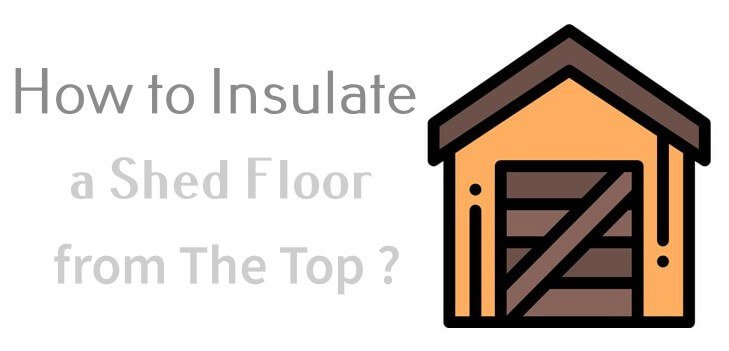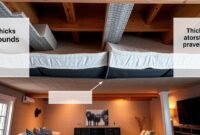Floor insulation is the simplest yet cheapest alternative to keeping your property warm during winter. The installation may vary, but the common underfloor installations seem hard and more expensive to apply to existing floors. In this case, you may want to learn how to insulate a floor from the top.
Whether you insulate the floor from beneath or under, insulating the floor is beneficial for your home. Not only does it give you comfort, but it also decreases your energy consumption as it keeps the warmth for the whole house. It’s proven that floor insulation reduces up to 15% of heat loss through the floor.
When insulating old homes, insulation is added underneath the floorboards. That way, heat can avoid escaping into cold spaces in the ground.
Some may do the floor insulation by filling the gaps between the floors, while others may insulate the overall floor. Different types of floors determine different methods of floor insulation.
Before you start looking for contractors or floor insulation installation tutorial, you need to investigate the condition of your existing floors. If you find any moisture problems, we suggest you to reduce them with plastic or any moisture barrier. Once it’s done, you can start insulating the floor.
In this article, we will help you find out how to insulate two floors: one in a shed and the other in a wood floor.
How to Insulate a Shed Floor from The Top
When insulating a shed floor from the top, the steps are quite easy and don’t require expensive tools. To insulate a shed floor, you must lay a layer of the chosen insulation board covering the top of the floor. You can install floor insulation over the existing floor or between the joists.

- First, remove the shed contents. Next, place the blocks under each joist cavity or lay them down on top of the existing floor. You must ensure that you put at least two support blocks in each joist cavity.
- Next, you need to cut the rigid foam in different sizes depending on the length of the gaps between each floor. Lastly, reinstall the flooring with the rigid foam once you’re finished. Cover it with plywood to help stabilize the floor surface for the best result.
How to Insulate a Wood Floor from the Top
Wood floors are aesthetically pleasing but are high maintenance and can be very cold. However, floor insulation may help keep the heat inside your house. There are two easy and common ways to help you insulate them.
- First, you may want to use carpet or rugs, the most convenient ways to insulate your wooden floor. In this situation, you must adjust the carpet to fit the corner of your room. The thicker. To get the best insulation, we recommend you to use a thicker carpet, such as a pure wool carpet material. The thicker the carpet, the more effective the insulation will be.
- Secondly, you might want to try fiber insulation. Briefly, fiber insulation is like putting tons of layers of clothing. Fiber will give you a solid barrier between the feet and the floor from the cold weather under the floor. Thus, you must be very careful when installing them as they can cause breathing issue if the fibers are loose.
Quick Tips
If you have timber floors, we suggest detaching the floorboards from the top. For other existing floors, you can try installing floor insulation over the floor joists.
In conclusion, adding floor insulation is beneficial even though you got existing floors already. The floor insulation helps reduce energy consumption because the room is easier to heat up.
Aside from that, floor insulation will be a lifetime investment that will result in higher comfort levels. Though it would be challenging for existing home, it’s still doable.
Now you know how to insulate a floor from the top in many ways you can achieve. Have you decided which floor insulations suit you best?

